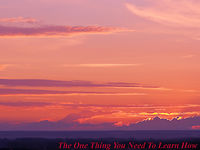Suy nghĩ sâu sắc - The Power of Active Stillness and Willingness to Wait
Nancy has a theory that greater consonance or integration of a person's personality leads to greater happiness. So, a person is happier if his actions are ones he believes are morally good. And he is unhappier if he believes his actions are reprehensible.
Being engaged while still and being willing to wait both require some courage. They require an ownership of the dance similar to the ownership of who you are as a person.
Mark Twain - Drawing on my fine command of language, I said nothing.
We suggest practicing one single combination that you particularly like over and over. Do it until you are so comfortable with it that you are confident you can do it well. Then pick a pretty random place inside the combination and just stop completely. Stay engaged and connected and just wait. Feel that you are building suspense for the part of the combination that comes after and watch if you become more comfortable with this idea of waiting.
- Tên nghệ sĩ:
- Gideon Kremer
- Tên bài hát:
- All In The Past (Remembering Oskar Strock)
- Tiêu đề album:
- Tracing Astor
- Trang nghệ sĩ:
- http://www.kremerata-baltica.com/
(From the website): Kremerata Baltica, a chamber orchestra, was created in 1997 by renowned violinist Gidon Kremer, who serves as the orchestra's artistic director and solo violinist. The high artistic quality of the ensemble is the result of the exceptional talent of the individual musicians and Kremer's innovative approach to repertoire.
- 00:05
- Active stillness is very powerful.
- 00:07
- And the analogy is that, if you hear someone talk,
and they rise and the room quiets,… - 00:14
- ..and then they speak.
- 00:15
- The quietening of the room sort of
gives it significance. - 00:19
- And when I dance, when she dances
we do the same thing… - 00:22
- ..that, when we get in this embrace,
maybe I’m talking, I’m jittering, whatever… - 00:25
- ..but then, when we get here,..
- 00:27
- ..and I’m the leader at this moment,..
- 00:30
- ..then it becomes so still, that what comes
afterwards becomes more meaningful. - 00:34
- It becomes easier to understand, that
the movement becomes clearer,… - 00:38
- ..the lead-follow,
the connection becomes more crystal clear. - 00:42
- You’re now doing tango in HD.
- 00:45
- That’s a good analogy.
- 00:49
- Then, also we want it to be active because,
if it’s passive,... - 00:53
- ..that would be sort of like the TV turning on and off.
- 00:55
- There’s a scene where there's dialogue...
- 00:57
- ..and then a scene where they’re
walking through a field and there’s more dialogue. - 01:00
- And you can - and if you've said something
while the TV was in between things... - 01:04
- ..there'd be no meaning.
- 01:06
- Right, so it wouldn’t become especially momentous
the same way a room quietening would. - 01:10
- And so, if it’s active, you give it more meaning.
- 01:15
- And then about waiting:
- 01:16
- About waiting: ah, he wanted me
to speak about waiting. - 01:20
- So waiting is an amazing thing.
- 01:22
- When you’re doing something and then
you have a period where you’re still… - 01:25
- ..and you just wait before you go on,…
- 01:28
- ..it either can act as punctuation
for what you just did… - 01:32
- ..or, by some absolute magic, the quiet makes
what you’re going to do next seem more important. - 01:41
- So, it emphasizes what’s going to follow.
- 01:44
- So, when you embrace each other...
- 01:46
- ..and, sometimes, in the middle of a dance,
be here. - 01:58
- And that’s a very useful, in social dancing,
but it's also really effective in performance.



